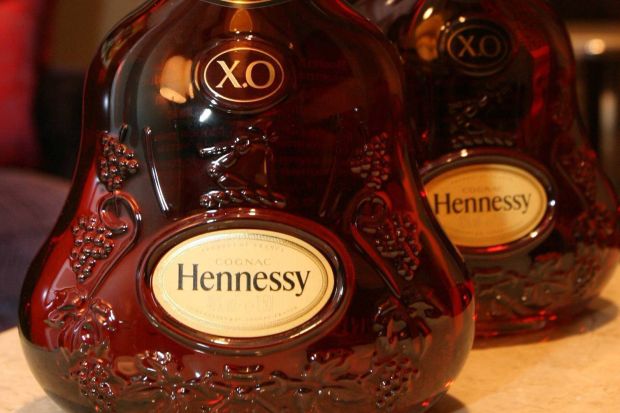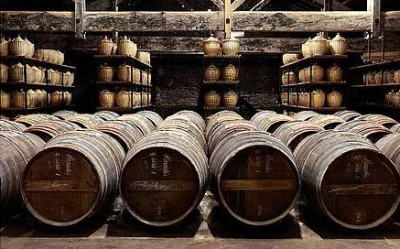There is a certain magic to making Hennessy XO, the name that is synonymous with cognac.
THE late hip hop rapper, Tupac Shakur, had a song named after it. So has 50 Cent, who refers to it as “Henny”. It is not clear how Richard Hennessy, an Irish soldier who founded the company back in 1765, would feel about his brandy being glorified in break beat style but, hey, when the hip hop community deems your drink to be a good thing, it’s best not to argue.
It is no secret that Hennessy is the name that made cognac famous. In the 1930s, it was touted to have the world’s largest stock of eaux de vie with thousands of barrels of all ages.
The privilege of having survived the test of time is a front row seat to history as it is being made. The company would survive the French Revolution in 1789 and just a year before French Emperor Napoleon Bonaparte and Josephine became lovers in 1795, Hennessy would begin delivery to the newly independent United States. The company also weathered the turbulence of World War II, when the Nazis occupied France.
According to Frederic Noyere, the managing director of Moet Hennessy Diageo in Malaysia, production almost came to a standstill in those four years. Back in the warehouses, where Hennessy’s fortunes were stored, stories of loyal staff who took extraordinary measures to safekeep vintage casks of eaux de vie from looting marauders, often at the risk of their own lives, still abound. Testament to their bravery is the presence of these vintage casks, some of which date back to the 1800s, with their precious contents still undisturbed.
The magic of Hennessy X.O, according to Noyere, begins in a barrel. Made of French oak, specifically sourced from the forests of Limousin near the wine-growing region of Cognac, France, it is here that the brandy derives its distinct chords of flavour. This is where the chemical exchange of tannins, giving the eaux de vie its final colour and smoothness during the ageing process, happens.
Following Hennessy specifications, the wood is first toasted to a medium doneness. Using an age-old secret method passed down through eight generations, Noyere explains that the medium range was decided on because a light toast would not be able to impart enough impact to the flavour while a stronger toast would overpower the eaux de vie with an unpalatable woody taste.
Acting as sentinel to the taste of Hennessy is Yann Filoux, 60, the master blender. Interestingly, the business of taste is one that is committed to memory and passed down through generations. In this case, the incumbent is a direct descendant of Jean Filoux, the first master blender who joined the company in 1800.
Just how accurate can the human olfactory system be in the gauging of a cognac?
According to Noyere, it is a skill that can only be gained by experience and despite the presence of modern technology, the final decision on whether a barrel’s contents is to be blended, bottled or allowed to age further in a cask is entirely up to him.
“The tasting process is a strict one. It is only done between 11am and noon at a time when the senses are most awake and always done at the same place so as to control the surrounding elements from influencing the taste buds,” explains Noyere.
Not forgetting the rest of Filoux’s team of eight, Noyere reveals that they were purposely selected according to age, ranging from their 30s to 50s. This acts as a control against any changes that may affect the master’s sense of smell and taste, which can be due to his ageing process or in the event of a cold, for example.
In any case, people in this profession will go to great lengths to preserve their assets and eschewing smoking is one of them.
The job of a master blender is one that allows for the witnessing of miracles.
“After a period of time in a barrel, say no less than 12 years, the contents of a barrel will be ready for blending. The blends in Hennessy X.O, for example, are 25 to 30 years old. But there are exceptional cases when there are some casks that never seem to stop improving over the years,” says Noyere.
Divine intervention notwithstanding, Noyere supposes that this could have been due to a phenomenal combination of factors like the weather, soil conditions and the timing of the harvest.
“The grapes may have been plucked at just the time when the sugar to acid ratio was just right.
“The eaux de vie may also have been placed into the right barrel, where the oak must have been subjected to just the right amount of nutrients during its growth. Even the condition of the warehouse can be an influence where humidity is concerned,” says Noyere.
The whole process comes to fruition after the master blender has assessed the range of flavours in the cellars. A decision is then made on which eaux de vie will be used in the blending to create the house’s signature cognac.
Ever the amiable cognac man, the one way to arouse a withering displeasure in this Frenchman is to regard his product as “a bottle of over-glorified grape juice”.
“We are talking about centuries of tradition here,” he replies hotly.
“We do not regard our barrels as inanimate objects! They are like our children whom we have nurtured over the years,” he adds indignantly.
But the man is quick to regain his composure. A company that is regarded as the Rolls Royce of cognac (Hennessy has 40% of production share in the Cognac region) and has a sales figure of no less than 50 million bottles a year has no need to prove itself.
Adding a whole brand of cool to the whole affair is the unofficial endorsements of famous names from the hip hop circle. Eminem is purported to be a Hennessy fan and so is Snoop Dogg.
“We have devotees who remain faithful to its richness and elegance. The cultivation of this sophisticated appreciation is to simply begin with the first sip. Then it dawns on you that you are not only drinking cognac but time and passion as well,” concludes Noyere.







